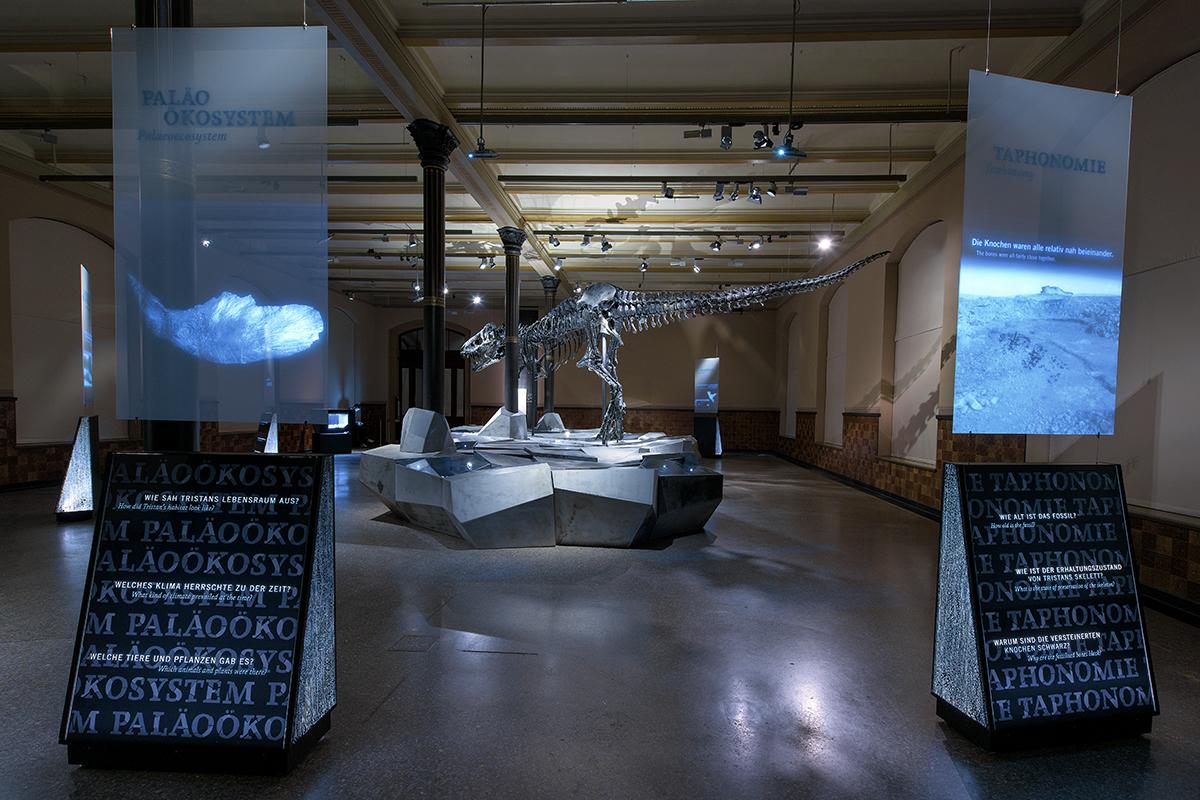Science education and science communication have always been important tasks of integrated research museums. Museum exhibitions, which are visited daily by a broad public, offer a particularly good opportunity to fulfill these tasks. A popular example is the special exhibition "Tristan - Berlin shows teeth", whose centerpiece is the fossil skeleton of a Tyrannosaurus rex, which served the MfN not only as an exhibition but also as a research object. Research results from the disciplines of anatomy, functional morphology, paleopathology, taphonomy and paleoecology were included in the exhibition and communicated to the public. To achieve this, a close cooperation between the participating scientists (especially paleonotologists) and the exhibition department of the museum, as well as the focus on science communication of this interdisciplinary research project were essential.
In order to determine the detailed goals of the participating exhibition curators and scientists with regard to science communication, an investigation based on the "Communication Goals and Objectives" by John Besley and colleagues (2016) was conducted in connection with this research project, for which one exhibition curator and two participating scientists from the fields of paleopathology and functional morphology were interviewed in open-ended interviews. Subsequently, the transcribed interviews were analyzed based on Besley and colleagues' (2016) theory-based categories. Categories of communication goals similar to Besley and colleagues’ (2016) were identified. The scientists interviewed clearly see their communication goals as contributing to the advancement of knowledge. The exhibition curator also focuses on external goals, such as the value of science, to gain more public attention.
In a future study, the visitors - as recipients - should also be surveyed to find out whether the communication goals were actually achieved. Furthermore, it would be desirable for future exhibitions to include additional expertise in the field of science communication and to generally involve museum and science educators or specialized didacticians in the development of exhibitions.
Duration:
2017-2020
